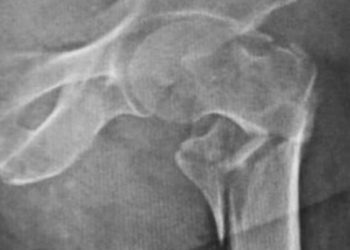2 Minute Medicine Rewind September 4, 2023
Direct Dispensation of Prenatal Supplements With Iron and Anemia Among Pregnant People
1. In an underserved community, providing free iron-containing prenatal vitamins improved hematocrit, reduced the prevalence of anemia, and reduced the need for postpartum blood transfusions.
Evidence rating level: 2 (Good)
Maternal anemia during pregnancy is associated with a greater need for postpartum blood transfusions, intrauterine growth restriction, and perinatal mortality. Researchers aimed to determine whether providing free iron supplements to an underserved patient population during prenatal visits would improve hematologic indices and reduce the need for postpartum blood transfusions. This study was conducted at Parkland Health, a hospital in Texas with a 95% Medicaid-funded or self-pay patient population. Patients who delivered between January and August 2019 were recommended iron supplements, while those who delivered between May and December 2020 were provided with free iron-containing prenatal vitamins throughout pregnancy. 13,910 patients were included in this study, with 7075 patients in the recommended supplements cohort and 7160 in the provided supplements cohort. Both cohorts had similar characteristics for age, race, ethnicity (76% Hispanic population), insurance payer status, and parity. On admission for delivery, the provided supplements cohort had a greater hematocrit compared to the recommended supplements cohort, with a mean difference of 1.27%; 95% CI, 1.13%-1.42%, as well as a lower prevalence of anemia, 11% compared to 18% (risk ratio [RR], 0.61; 95% CI, 0.56-0.66). The need for postpartum blood transfusion was also reduced by one-third for the provided supplements group compared to the recommended supplements group, from 10 per 1000 to 6.6 per 1000 (RR, 0.62; 95% CI, 0.43-0.91). A limitation of this study is that patients were not randomized into these two cohorts and were instead grouped based on the timing of their pregnancies. As such, data may be affected by factors such as the COVID-19 pandemic, which predominantly affected those in the provided supplements group. As well, researchers did not collect data from either group on adherence to iron supplementation. Overall, this study demonstrates that providing iron-containing prenatal vitamins to patients during prenatal visits, particularly for patients in an underserved community, may be an effective quality-improvement initiative for improving hematocrit, reducing the prevalence of anemia, and reducing the need for postpartum blood transfusions.
1. Compared to non-Indigenous Canadians, Indigenous females of reproductive age living off of reserves had poorer access to primary care and greater unmet healthcare needs.
Evidence rating level: 3 (Average)
Researchers aimed to assess health care disparities among Indigenous females in Canada living off of reserves. This cross-sectional study collected data on females aged 15 to 55 from the Canadian Community Health Survey from 2015 to 2020, including 2902 First Nations, 2345 Métis, 742 Inuit, and 74,760 non-Indigenous females. Of those in the non-Indigneous group, 70.7% self-identified as being of White race. Researchers specifically focused on females of reproductive age, recognizing that primary care plays an important role in preconception care and improving health during pregnancy and the postpartum period. Compared to non-Indigenous Females, 4.2% (95% confidence interval [CI] 1.8% to 6.6%) fewer First Nations and 40.7% (95% CI 34.3% to 47.1%) fewer Inuit females had access to a regular primary care provider. Additionally, 3.2% (95% CI 0.3% to 6.1%) more First Nations females and 4.0% (95% CI 0.7% to 7.3%) more Métis females reported unmet healthcare needs. Indigenous females were more likely to report using Hospital services for non-urgent care needs, waiting longer for access to primary care, and having worse physical and mental health. Limitations of this study include the use of the Canadian Community Health Survey, which excludes Indigenous peoples living on reserves and uses exclusively self-reporting to collect data. Overall, this study demonstrates that Indigenous females of reproductive age in Canada living off of reserves have poorer access to primary care and greater unmet healthcare needs compared to non-Indigenous females. Future research may expand on this study by including data for Indigenous females living on reserves. The authors suggest that more accessible and culturally competent care needs to be available to Indigenous females living in Canada.
Genomic Sequencing as a First-Tier Screening Test and Outcomes of Newborn Screening
1. In this prospective cohort study, 1 out of 500 newborns were diagnosed with a medical condition that was detected via genetic sequencing but was missed by more commonly used biochemical screening tests.
Evidence rating level: 1 (Excellent)
Newborn screening (NBS) is routinely performed across the world using biochemical testing methods. The effectiveness of genetic sequencing as an alternative method for NBS has not previously been studied. Researchers aimed to compare the ability of biochemical and genetic sequencing methods to detect disorders in newborns. This prospective cohort study included 29,601 newborns in China between February 21 and December 31, 2021. All newborns were screened via both biochemical and genetic sequencing methods. The more traditional biochemical screen is able to detect 43 disorders, while genetic sequencing is able to detect an additional 85. Via genetic sequencing, 813 infants screened positive (2.7%; 95% CI, 2.6%-2.9%), with 402 of these resulting in a diagnosis, which is a positive predictive value of 50.4% (95% CI, 50.0%-53.9%). One out of every 500 newborns was diagnosed with a condition that went undetected by biochemical screening (95% CI, 1/385-1/625). As this study was conducted among only Chinese newborns, similar studies may need to replicate this data before screening recommendations can be made in other countries. Overall, this study demonstrates that genetic sequencing improves the detection of medical conditions during NBS compared to biochemical testing.
1. In Brasil, Russia, India, China, and South Africa, the availability of breast cancer screening programs was associated with a significant reduction in breast cancer mortality.
Evidence rating level: 3 (Average)
Breast cancer is the greatest contributor to cancer-related morbidity and mortality for females across the world. Breast cancer screening (BCS) is an effective strategy for detecting asymptomatic people with breast cancer, allowing for early intervention. In Brazil, Russa, India, China, and South Africa (BRICS countries), which collectively account for approximately half of the global population, the association between BCS and breast cancer-related morbidity and mortality has not been well established. Data were collected from the Global Burden of Disease study 2019 on breast cancer incidence, mortality, and disability-adjusted life years (DALYs), as well as BCS methods and availability. The availability of mammography, as opposed to only self or clinical breast exams, was associated with a decreased mortality rate (− 2.64, p < 0.001). The presence of national or regional mammography programs reduced mortality compared to having none or only a pilot screening program (national − 1.52, p < 0.001; regional − 1.40, p < 0.001). Other factors associated with increased breast cancer-related mortality and DALYs included cardiovascular disease, smoking, and high BMI. A limitation of this study is that only the availability of breast cancer screening programs was assessed, not the utilization of such programs. As well, it is difficult to study the availability of BCS programs as an independent variable, given that the presence of these programs is likely associated with other factors, including higher income countries or regions. Similarly, the availability of treatment for breast cancer in different regions is also likely to impact the mortality rates. Overall, these findings support the implementation of breast cancer screening programs that go beyond self and clinical breast exams.
1. Compared to those consuming below the maximum tolerable daily intake of the mycotoxin deoxynivalenol, those consuming above this threshold were at a greater risk of giving birth to small-for gestational age infants.
Evidence rating level: 1 (Excellent)
Deoxynivalenol (DON) is a mycotoxin found in certain agricultural products, such as wheat and corn. It has been found to cause fetal growth retardation in animals, but its effects have not previously been studied in humans. Researchers aimed to assess the effect of DON consumption on fetal growth. 1538 participants were included in this prospective study via the Tongji Maternal and Child Health Cohort (TMCHC) in Wuhan, China. Liquid chromatography with tandem mass spectrometry were used to measure both total (tDON) and free (fDON) DON in urine during the second trimester, which was then used to infer the daily intake of DON. 35.9% of subjects were found to exceed the provisional maximum daily intake of DON, which is 1 µg/kg bw. After adjusting for confounding variables, greater urinary tDON was inversely associated with birth weight (adjusted β = -22.00 g, 95% CI: -37.11, -6.89). Compared to the lowest third of tDON concentrations, birth weight was decreased by 81.11 g (95% CI: -127.00, -35.23) for the highest third (p <0.001). Compared to those below the maximum tolerable daily intake, those above this threshold had offspring with lower birth weight (β = -79.79 g; 95% CI: -119.09, -40.49) and greater risk of small-for gestational age (SGA) (OR = 1.48; 95% CI: 1.02, 2.15). A limitation of this study is that there may be additional confounding variables that were not adjusted for, such as the consumption of toxins other than DON. Overall, this study suggests that stricter regulations on the levels of DON in food products should be enforced for the protection of fetal health.
Image: PD
©2023 2 Minute Medicine, Inc. All rights reserved. No works may be reproduced without expressed written consent from 2 Minute Medicine, Inc. Inquire about licensing here. No article should be construed as medical advice and is not intended as such by the authors or by 2 Minute Medicine, Inc.








